30 (Plus) Years of Pride
A Timeline
By David Fagan and Skip Teauxmelou.
Additional reporting 2004–2008 by Nancy Ford.
Return to main feature: Page 1 • 2 • 3
Sources
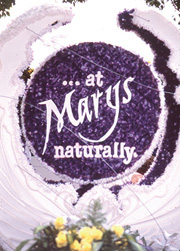
•1965 —With financial backing from El Paso-born trans pioneer Reed Erickson, one of the nation’s first trans clinics opens in Johns Hopkins Hospital at The University of Texas Medical Branch, with a stated purpose to care for “gender dysphoric” patients.
•1967 —Rita “Papa Bear” Wanstrum, owner of the Roaring Sixties (2305 S. Shepherd, now covered by a larger building) founds The Tumblebugs, a group of women who raise money to hire legendary lawyer Percy Foreman to defend those among their number who were arrested during a bar raid, for cross-dressing (fly front pants being illegal dress for females).
•1972 —The Montrose Gaze, Houston’s first gay community center, opens its doors. On June 24 Houstonians travel to Dallas to participate in the first Pride parade in Texas. Watched by about 3,000 people, 130 participants made the half-hour march from Market Street up Main to Harwood.
•1973 —In their first effort toward recognition for Houston’s GLBT community, representatives of the Houston Gay Political Caucus (HGPC) appear before City Council in an unsuccessful attempt to have the last week in June declared Gay Pride Week.
•1975 —Pokey Anderson, Keith McGee, Bill Buie, and Hugh Crell found the South’s first GLBT civil rights organization, the Houston Gay and Lesbian Political Caucus (HGLPC), the successor to the HGPC. On June 30 the caucus holds a press conference, led by Pokey Anderson, Jerry Miller, Rev. Robert Hall, and Ray Hill, to publicly announce its formation and declare its intent to solidify Houston’s gay vote and screen candidates for endorsement. Ray Hill also announces that 1975 will be the last quiet celebration of the Stonewall anniversary in Houston. The first president of the caucus is Gary Van Otteghem, who is fired from his job as City Controller after his August 1 appearance before the Harris County Commissioners’ Court to speak out in favor of gay rights.
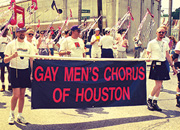
•1976 —On June 20, Houston’s first Pride “parade” is an informal march sponsored by the University of Houston’s Gay Activist Alliance to commemorate the Stonewall Rebellion.
•1977 —Plans for a Mardi-Gras-style parade are cancelled for lack of funds. On June 16, 4,000 gays, lesbians, and equal-rights supporters march through downtown Houston toward a City Hall protest rally, along the way circling the Hyatt Regency Hotel, where gay-bashing chanteuse Anita Bryant is performing at a State Bar of Texas banquet.
•1978 —Still no parade, but the June 25 Town Meeting I is the centerpiece of Houston’s first official Gay Pride Week. The meeting results in the creation of many organizations including the Montrose Counseling Center, the Montrose Activity Center, the Gay and Lesbian Switchboard, the Hispanic Caucus, and the Montrose Sports Association.
•1979 —With the support of HGLPC, between 10,000 and 12,000 spectators gather on July 1 to watch Houston’s first official Pride parade. The parade’s theme, “United We Stand,” reflects the emerging solidarity within the gay community. The Parade Committee chooses as the first Grand Marshal Thelma Hansel, the openly proud mother of a gay son and his lover.
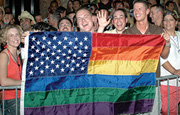
•1980 —HPD continues their pre-Pride Week tradition of gay bar raids. The 1980 raid at Mary’s results in 61 arrests, including two lesbian bystanders who are outside the bar. A few days later, many of those arrested were proudly sporting “Mary’s Fairies Out of Jail” T-shirts. The first Pride Guide, with a schedule of events, political editorials, and historical information about Houston’s gay community, is published. Several Houston City officials ride in convertibles in the parade. Mary’s Grand Prize float depicts an HPD officer beating someone, and many marchers wear black arm bands in memory of Fred Paez, killed earlier that year by an off-duty policeman. Barely a month later, on August 12, due to the extraordinary work of Phyllis Randolph Frye, Houston’s city ordinance 28-42.4, criminalizing cross-dressing, is repealed.
•1981 —The parade celebrates with the theme “We the People.”
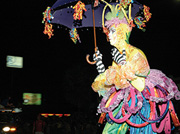
•1982 —”A Part of . . . Not Apart From” is this year’s theme. Mayor Kathy Whitmire appears at the Rally in Spotts Park, along with other Houston politicos, including City Council members George Greanias, Dale Groczynski, and Jim Greenwood, as well as Lance Lalor (the City Comptroller), Mike Driscoll (Harris Country Attorney), and Debra Danburg (State Representative District 79).
•1983 —Entries celebrate the theme, “Unity through Diversity.”
•1984 —Early in June, City Councilman Anthony Hall’s introduction of an amendment to the city’s antidiscrimination ordinances to protect gays and lesbians in city employment stirs very vocal opposition. The Ku Klux Klan’s June 9 march from Mary’s to Numbers brings out riot police, but few observers from the gay community. The amendments are passed 10 days later amid vocal protests from opponents who pack Council chambers. Mayor Kathy Whitmire delivers the first City Proclamation declaring the week Gay Pride Week. “Unity and More in ’84” is the theme for the June 24 parade, which is the largest and most lavish yet. A record 100,000 view 54 entries. In the meantime opponents of the antidiscrimination ordinance obtain the necessary signatures to force a referendum that is set for January.
•1985 —The AIDS crisis has struck deeply in the gay community, spawning fear and increasing negative reaction among Houston’s general population. After Councilman Anthony Hall’s amendments to antidiscrimination ordinances are defeated by voters at the January 19 referendum, former Mayor Louie Welch set his sights on winning back the office of mayor and introduces a “Straight Slate” set of candidates for City Council. On June 14 Houston holds the 1985 Pride parade under the banner “Alive With Pride.” The crowd is small and the mood guarded. The bright spot of the year is the total defeat of Louie Welch and his “Straight Slate” at the November election.
•1986 —The parade theme this year is “Liberty Is in Our Grasp.” The Parade Committee suffers from internal disagreements, and a climate of intolerance pervades the city. This year’s parade is one of the briefest, lasting only 40 minutes, and the crowd is one of the smallest. On the national scene, the U.S. Supreme Court upholds the state of Georgia’s sodomy law in the case of Bowers vs. Hardwick, and Michael Bowers begins to serve his time for his “crime against nature.”
•1987 —Pride Week begins as it often has in the past . . . with bar raids by the Houston Police Department. On three consecutive nights, officers raid Michael’s, Chutes, and the JOE Club, arresting patrons, staff, and male dancers. HGLPC leadership holds a press conference, announcing its intention to meet with Mayor Whitmire and Police Chief Brown and declaring that Houston’s gay community will not be silenced by intimidation. This year the parade becomes the Houston Gay and Lesbian Pride Parade. “Come Out and Celebrate” is the theme.
•1988 —The parade’s theme, “Rightfully Proud,” recognizes the emerging gay rights movement. This is the first year that “Houston Gay and Lesbian Pride” is printed prominently on parade T-shirts. Honorary Grand Marshals are slain San Francisco Supervisor Harvey Milk, the first openly gay elected public official (represented at the parade by San Francisco Supervisor Harry Britt), and Sharon Kowalski (represented by an empty wheelchair), the young lesbian whose family separates her from her lover Karen Thompson after she is profoundly disabled in a 1983 auto accident.
•1989 —This year’s parade, celebrating Stonewall 20, is the largest ever with 60 entries, including the Lone Star Band of Houston and the Oak Lawn Band of Dallas combined as one marching unit. There are 14 big floats, two dozen marching units, two dozen vehicle entries, and walking contingents. The one-hour parade is broadcast live on KPFT-FM, and an airplane sponsored by Mother’s Bar flies overhead trailing a streamer that reads “Gay & Proud.”
•1990 —The parade theme, “Look to the Future,” encourages the community to look back on the gains that have been made and to look forward to the challenges ahead. Church groups, families, and—for the first time—corporate sponsors such as Budweiser, in addition to gay organizations and businesses, make up the 75 entries. Honorary Grand Marshals U.S. Congressman Craig Washington and Texas State Representative Debra Danburg give visible evidence of the growing political strength of Houston’s gay community. A new spate of violence against the community begins. On July 29, Michael James Burzinski is abducted outside the nightclub Heaven (where South Beach is now) by four youths from Aldine, Texas, and shot in the back of the head.
•1991 —The parade’s theme, “Take Pride,” urges the community to take stock of its achievements and be rightfully proud of its contributions to society. Pride Week’s official poster features the faces of the community—individuals, couples, single parents, seniors, and all the diversity of the gay rainbow. Held under storm-threatening skies, the parade draws the largest crowd in recent history. Even the weather seems to validate the event, as the final float makes its way to the end of the parade route before the rain falls, giving rise to the popularly held notion that “It never rains on our parade.” On July 4, homophobic violence again grabs the headlines. Twenty-seven-year-old Paul Broussard and two of his friends are assaulted by 10 youths from the Woodlands; Broussard’s friends escape, but Broussard is viciously beaten and dies.
Then, in the wee hours of November 3, Phillip W. Smith dies after being shot outside Heaven, and Queer Nation stages a protest outside Houston Police headquarters. Q-Patrol, a community watch group, is formed to patrol bar areas in Montrose and report suspicious activity to police. The year ends on a note of hope when, on December 17, after an eight-year legal struggle, lesbian Karen Thompson gains custody of her disabled partner, Sharon Kowalski.
•1992 —Jack Valinski, Carol Clark, and Brian Keever incorporate the Pride Committee as a 501(c)(3) nonprofit under the new name Pride Committee of Houston, Inc. It is set to operate as a year-round organization to plan, organize, and manage events in celebration of Gay and Lesbian Pride Week. As one of its first acts, the new board establishes the Founder’s Award, which it presents to Larry Bagneris, former president of the Gay Political Caucus and, from its inception until his move back to his native New Orleans, the driving force behind the parade’s form and structure. In keeping with the parade’s theme, “Pride = Power,” and its emphasis on the volunteerism of the community, the Gay/Lesbian Switchboard of Houston (which has served as a clearinghouse for information about the gay community, its people, organizations and their events for the past decade) is chosen Honorary Grand Marshal and leads more than 80 units, including a group from Texas A&M University. State Representative Debra Danburg, Congressional candidate Ben Reyes, City Councilwoman Shelia Jackson Lee, and Harris Country Precinct 1 Constable Jack Abercia appear at the post-parade rally, evidence of the increasing acceptance of gays and the recognition of their political power.
•1993 —Houston is the site of a national conference of Southern Baptists, which makes homosexuality a central theme and pledges to defeat politicians who support or tolerate homosexuality. Five city officials attend the parade or other Pride events, but Mayor Bob Lanier does not accept the invitation to join in. The parade’s theme, “Out and Proud,” takes note of emerging national movements and their grassroots development in Houston. Taking part for the first time are representatives of the Houston NAMES Project, members of Houston’s ACT-UP organization, and parents and children from the Houston Chapter of Parents and Friends of Lesbians and Gays (PFLAG), which is named 1993 Organizational Grand Marshal.
•1994 —This year is the 25th anniversary of the Stonewall Riots, and Houston’s Pride parade acknowledges that milestone in its theme, “HouStoneWall 25,” even moving Pride Week celebrations to an earlier date in the month to accommodate the large numbers who will travel to New York for Pride Week there. Parade attendance is estimated as high as 20,000 and now includes large numbers of participants and spectators who are not homosexual. The parade is becoming a neighborhood event in Montrose, as well as a Pride event for the entire city.
•1995 —Pride Week 1995 successfully markets the week’s diverse schedule of events, not only to the gay community but also to the city, corporate sponsors, and the media. In recognition of Pride festivities, the Houston City Council approves the hanging of pink triangle banners along both sides of Westheimer through Montrose. Noting in its theme that the community had moved from “Silence to Celebration,” the Pride Committee gives recognition to the continuing place of the parade in facilitating gay individuals in their journey from invisibility to pride, whether personal, local, national, or global.
•1996 —The 1995 theme was expanded upon this year under the banner “Pride Knows No Borders,” as Candace Gingrich, the outspoken lesbian half-sister of Speaker of the House and gay rights foe Newt Gingrich, is named Grand Marshal, a choice that thrusts a national spotlight on Houston’s parade and adds Houston’s voice to the growing national demand that there be an end to civilly sanctioned discrimination.
•1997 —The parade goes dark and lights the night. After 20 years of a parade under the intense Texas sun, the Pride Committee works outside the box, and under its aptly chosen theme, “Glowing with Pride,” it introduces the nation’s first nighttime Pride parade. More than 100 entries—over half of the floats illuminated with all forms of lighting—shine brightly in the night, and a jubilant crowd of 70,000, its goodwill even extending to the group of about 40 protesters from Heritage Baptist Church in Mount Enterprise, Texas, and Grace Baptist Church in Houston. The contrast couldn’t have been greater: the protesters behind barricades set up by the Houston Police Department, the gays in the middle of the street, “Glowing With Pride.”
•1998 —Newly elected Mayor Lee Brown makes good on a campaign promise to issue an executive order reversing the referendum of 1985.
•1999 —A record-breaking crowd of 100,000 watches as Westheimer glows with the light reflected off a disco that measures 8 1 / 2 feet across. An idea envisioned by Lee Harrington, the disco ball is made possible by funding from Jim “Mattress Mac” McIngvale who rides in the parade on a float with diva Martha Wash.
•2001 —A contingent of gay and lesbian HPD officers march for the first time.
•2002 —The Houston Fire Department participates for the first time.
•2003 —On June 26, just two days before the Pride parade, the U.S. Supreme Court handed down their decision in Lawrence vs. Texas, declaring invalid Texas’ sodomy statute and recognizing homosexual rights to privacy and fundamental rights to equality under the law. Garner and Lawrence are named Pride Parade’s Honorary Grand Marshals. T-shirts announcing “legally gay” are sprinkled among the rejoicing parade goers.
•2004 —Grand marshals Sonna Alton, Jerry Simoneaux, Sue and Jim Null, and Lesbian Gay Rights Lobby of Texas lead the parade with its theme “Pride as Big as Texas.” Houston Mayor Bill White surprises the parade audience by opting to walk the route instead of waving to constituents from a convertible.
•2005 —Grand marshals Weldon Hickey, Deb Murphy, Dennis and Evelyn Schave, and Bayou City Boys Club lead the parade with its theme “Equal Rights! No More! No Less!” The Pride Festival, comprised of multiple commercial and nonprofit vendor booths, is headlined by pop singer Sophie B. Hawkins.
•2006 —Grammy-nominated headliner Taylor Dayne entertains the Pride Festival crowd before grand marshals Phyllis Randolph Frye, Ray Ramirez, Rev. Marilyn Meeker-Williams, and Bunnies on the Bayou lead the Pride parade, themed “Say It Out Loud!”
•2007 —Long-term Pride Houston operative, Jack Valinski, resigns as the organization’s executive director amid internal conflict, but is overwhelmingly elected male grand marshal, leading the Pride parade with Maria Gonzalez, Texas State Representative Garnet Coleman, and Imperial Court of Houston. The theme is “Lone Star Pride.”
•2008 —Following an unsuccessful 2007 push to move traditional Pride festivities to a downtown location in September, Houston’s GLBT Pride Parade stays in Montrose in June to celebrate its 30th anniversary with the theme “We Are Family.” Kelly McCann, Dalton DeHart, Julie Eberly, and AIDS Foundation Houston are grand marshals.
Return to main feature: Page 1 • 2 • 3
Sources









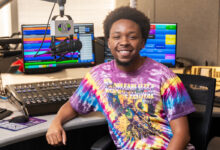

Comments